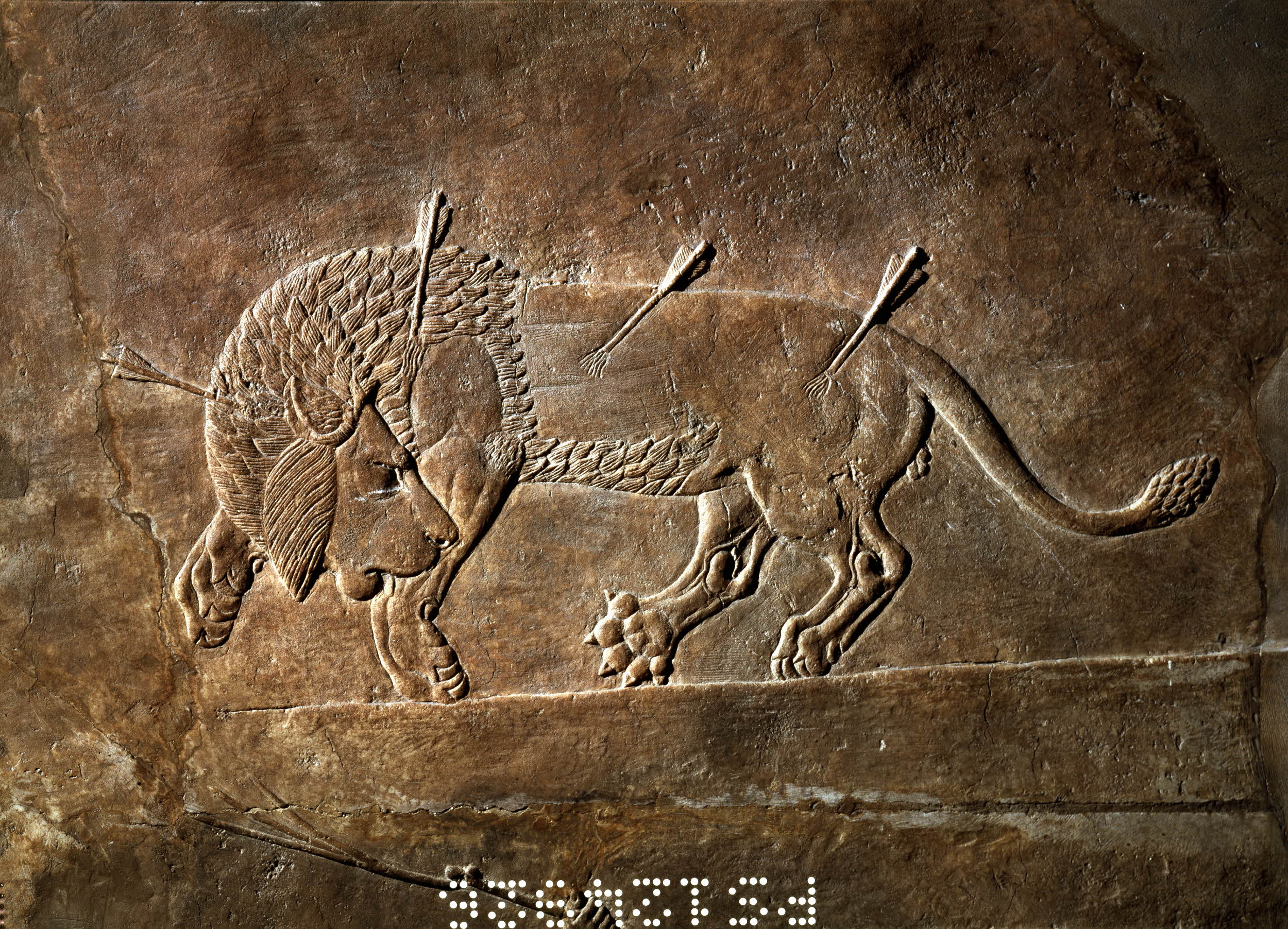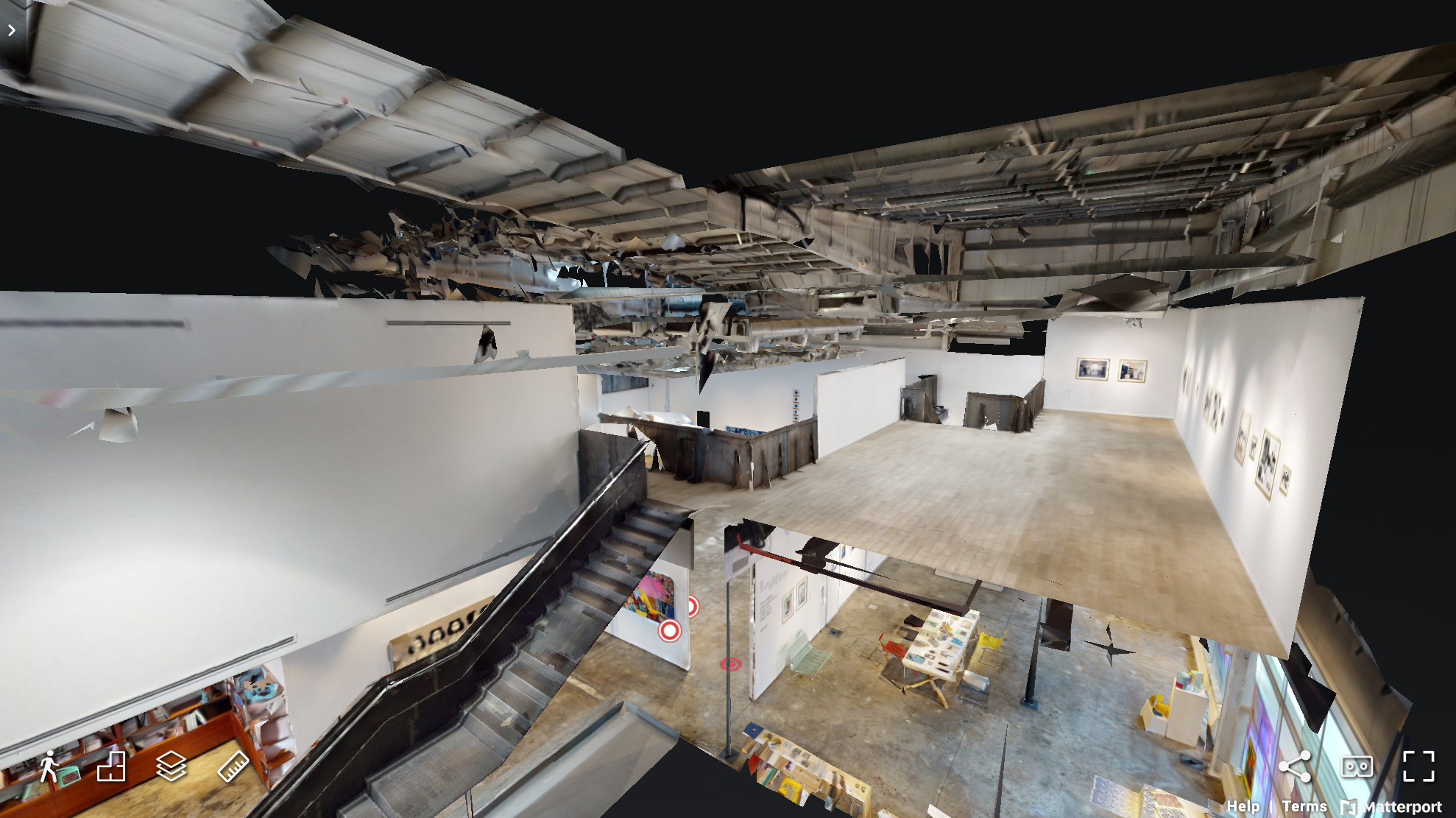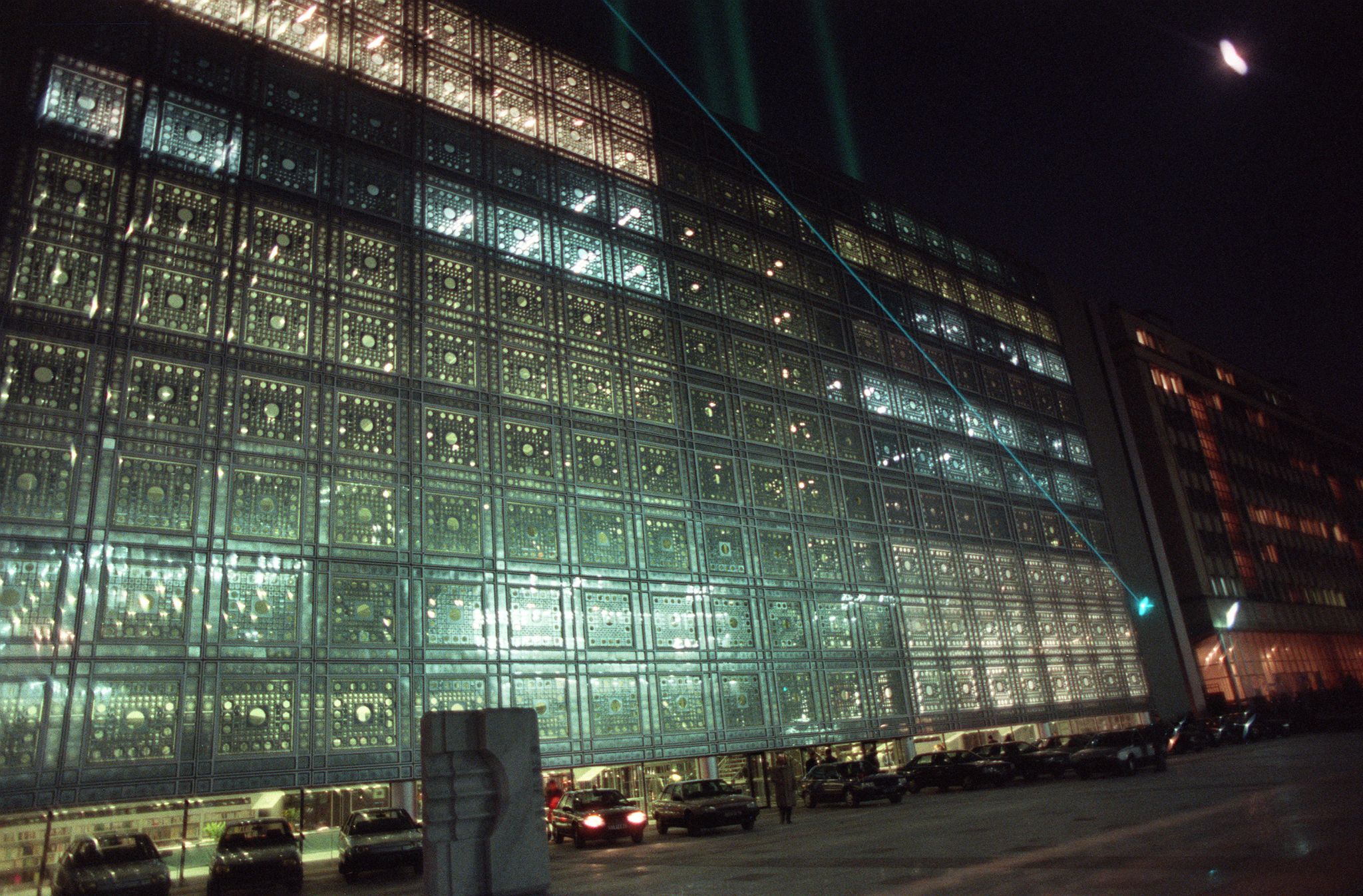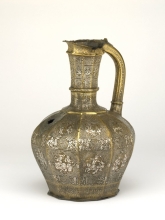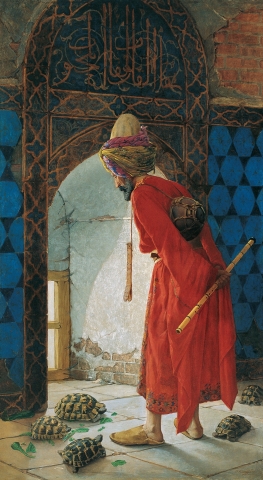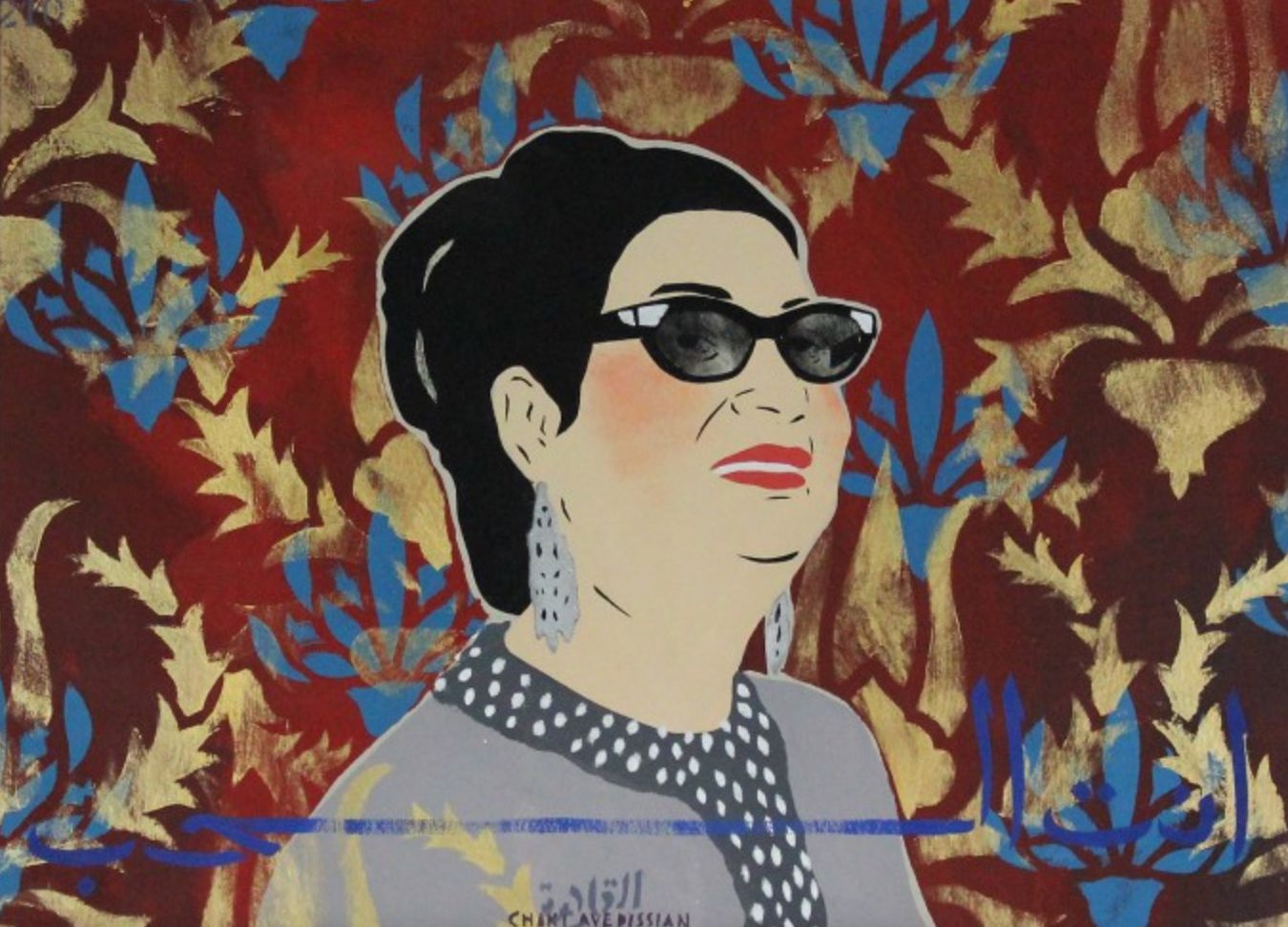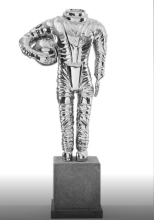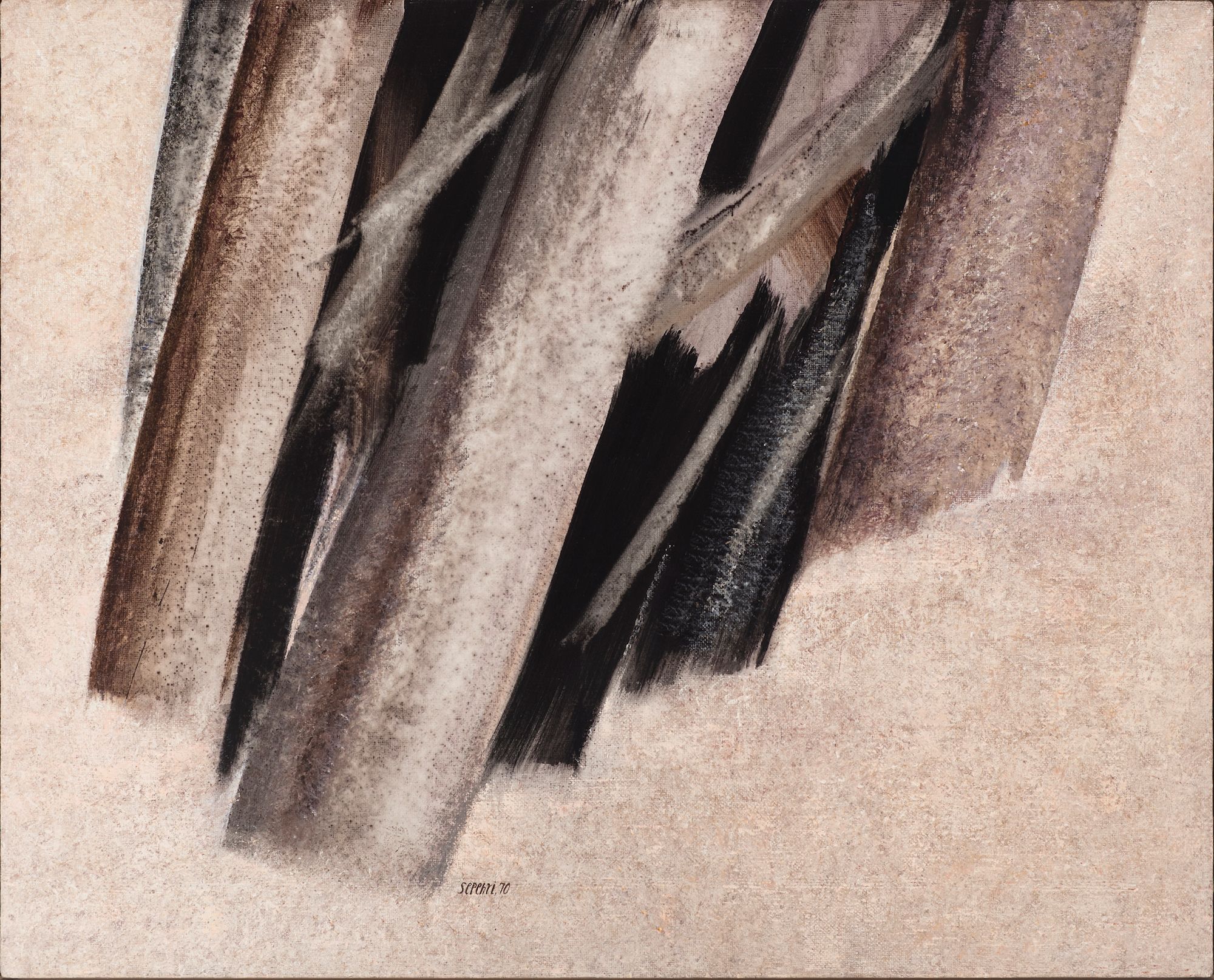Art and coronavirus: Middle Eastern galleries to view on lockdown
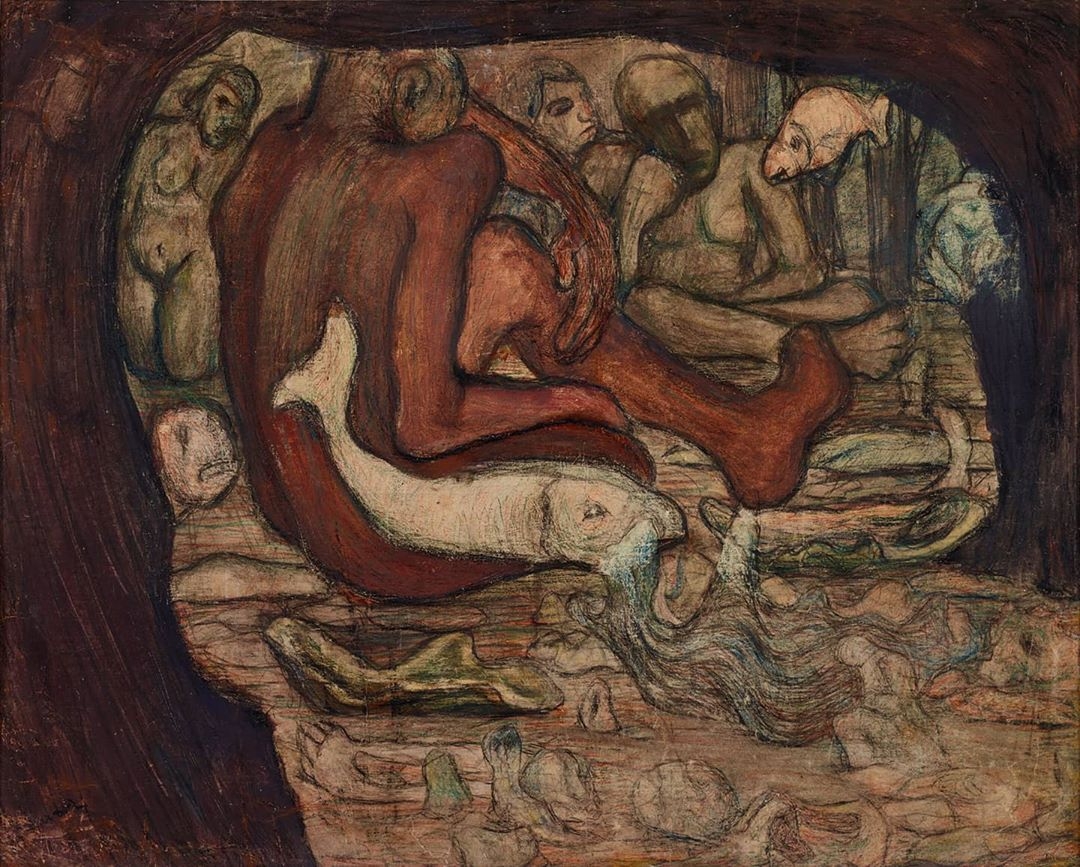
The coronavirus pandemic has seen many of the world's finest art establishments close their doors in the name of public safety. By way of replacement, galleries and museums are now serving up virtual tours that can be enjoyed from the comfort of one's home.
One of the latest to announce its temporary closure is the Ashmolean Museum in Oxford, UK, with some 4,000 objects from the Islamic Middle East, including 1,500 ceramic pieces. “The Ashmolean’s doors have been open since 1683, so it was difficult to close them this week,” said director Xa Sturgis, in an email to visitors.
But not everyone is prepared for the online transition: the section of their website devoted to the Prince Sultan bin Abdulaziz Al Saud Gallery, housing highlights from the Islamic Collection, currently shows just three untitled objects. Sturgis promised the museum was “working on ways you can continue to enjoy our collections”.
Museums seeking to expand their online presence could take a leaf from Rijksmuseum in the Netherlands, with its high-quality downloadable digital images, or the fun of creating your own “studio” collection.
New MEE newsletter: Jerusalem Dispatch
Sign up to get the latest insights and analysis on Israel-Palestine, alongside Turkey Unpacked and other MEE newsletters
Meanwhile, on his upbeat Facebook feed, Lebanese art collector Basel Dalloul has been posting lists of other virtual galleries, from the Guggenheim in New York to the Sursock Museum in Beirut. The latter boasts a VR tour of its recent exhibition, Baalbek, Archives of an Eternity. Dalloul himself has just launched a website showcasing the “largest archive and collection of Arab art”.
With the art world moving online, MEE highlights some of the best collections from the region you can view without having to leave home.
1. The Ramzi and Saeda Dalloul Art Foundation (Beirut)
“Ladies and gentlemen, citizens of planet Earth, the largest archive and collection of Arab art is finally here.” So said Basel Dalloul, the data communications CEO and art collector, as the Dalloul Art Foundation (DAF) in Beirut opened its doors on 20 March... online.
The Ramzi and Saeda Dalloul Art Foundation, named for Dalloul’s parents, fills several floors of a Beirut apartment block with its collection.
Basel is the DAF managing director, and unveiled its ambitious new website just days after the first confirmed cases of Covid-19 in Lebanon.
“This site wasn’t meant to be launched now, but given everyone’s general boredom at home, due to the Covid-19 pandemic we decided to release it early,” Dalloul announced on Facebook.
This collection of over 3,000 works from the Arab world was started by his father, Ramzi Dalloul, a businessman and UN economist, as well as an avid art buyer. It includes notable groups of Iraqi, Lebanese, and in particular Palestinian artists.
Basel Dalloul has worked to deepen the foundation’s research and cataloguing and that is reflected on the site. Search by name for the Lebanese artist Ayman Baalbaki, for example, and you can call up nine works, a biography, a record of past exhibitions, and several lively videos of the artist at work, spreading paint on giant canvases.
For the Palestinian artist Sliman Anis Mansour, the collection includes The Camel/Carrier of Hardships, from 2005, a signature work bought in 2015 for $250,000, along with 11 other works by the artist.
For now, the site focuses on individual objects and associated research. Virtual reality and walk-through features will be added later; and tours can be scheduled again once the coronavirus crisis is over.
2. Alserkal Art Week (Dubai)
Alserkal Art Week, at the Alserkal Avenue art and design complex in Dubai, UAE, an ambitious contemporary art centre with some of the region’s best-known dealers and galleries, was set to run 23-28 March this year.
The centre responded to the coronavirus crisis this week by launching alserkal.online, with 360 degree views of more than 15 galleries and 80 artists’ work in a snappy-looking and responsive VR system by 3D data platform company Matterport. The system has handy buttons to pick a floor plan or dollhouse view of each gallery, and a digital tape measure to check artwork sizes.
The Lawrie Shabibi gallery, for example, features a sculpture by Jordanian-Palestinian sculptor Mona Saudi, celebrated for her powerful work in stone, along with Moroccan modernist painter Mohamed Melehi’s canvases, known for their bright blasts of colour, in the airy gallery setting. Images are also displayed online individually, or with a link to the art sales site Artsy.
The 3-D walkthroughs are vital for sculpture; at the Third Line gallery, you’d be forgiven for thinking that Manzar, 2016, by the late Monir Shahroudy Farmanfarmaian, the Iranian artist with her own museum in Tehran, was a flat reverse-glass painting until you see the glowing colours of the globe on display in the gallery.
This explosion in the use of digital space has proved so successful, it is likely to continue. “I think most serious galleries are going to want to do it for all of their shows,” said Lawrie Shabibi’s co-founder William Lawrie, a pioneering figure on the Middle East art scene.
“For the next few months, digital is really the only way we can go, everyone has a lot of time to spare and is on a screen for much of the day, and it’s a welcome break from corona-news.”
In the long term, it brings a reconsideration of the role of art fairs, he added, a third of which are likely to be cancelled this year.
3. The Rijksmuseum (Amsterdam)
The Rijksmuseum in the Netherlands was already seen by art historians as a gold standard for museum websites: high resolution images to study, download or pick for a “studio” collection of your favourite works.
Take the alabaster portrait of the great Mughal emperor Shah Jahan; the zoom function, so often a challenge on other sites, allows one to study the fine detail of carved lines around the beard or neck.
Founded in 1798, with a million objects in its collection, the museum is a Dutch flagship chiefly famous for works by 17th century masters Rembrandt van Rijn and Johannes Vermeer.
This week, it "reopened" its Gallery of Honour online: a multimedia tour of the heart of the museum, top masterpieces as they’re shown on the wall and an audio guide for the works in English.
But it also boasts collections from the Middle East - like a photograph of the Iranian city of Kashan from the end of the 19th century, which shows domed dwellings and their courtyard fountains.
An Ottoman search, by contrast, delivers delightful etchings of famous sultans, even if the captions for a portrait of Mehmet IV are in Dutch.
4. Institut du Monde Arabe (Paris)
For some, the timing could not have been better: last year the Arab World Institute in Paris launched its cultural portal Altair, putting 120,000 items online, from visual art to audio and video. The institute, known universally by its French title, was founded in 1980 by France and 18 Arab countries, as a global centre for Arab culture.
These resources are searchable but also grouped in handy selections: from Arabic language and calligraphy to women artists to culinary traditions and football.
You can work through major names of Middle Eastern art or listen to Algerian folk music (although some entries link to physical libraries or CDs for purchase). With a frontage curved to match the flow of the River Seine, the museum hosts displays running from pre-Islamic culture to 21st century art.
Or it could be a chance to brush up on your French, plug in “tapis” and fill your screen with carpet weaves from Morocco to Turkey.
5. The British Museum (London)
Famous, or infamous, as the home of the Elgin Marbles, part of an eight-million strong collection acquired in the days when Britain ruled the waves - and at times large parts of the Middle East - the British Museum has a significant online presence.
Its catalogue, including the Islamic World galleries, relaunched recently after a major overhaul that saw a new collaboration with the Islamic Arts Museum Malaysia, is unflashy but methodical to say the least.
For each object - and the museum has four million of them - there are typically multiple photographs, front and back, like one personal favourite, a lion figure from Qajar, Iran.
Art historical objects usually come with a backstory, so there is less of a need for flashy presentation than there is with contemporary art. With the British Museum, the description and curator’s comments will be rock solid in their research and attributions.
You could scan Iznik tiles from Turkey, or choose an enamelled glass mosque lamp from Mamluk Egypt, an iconic example of Islamic craftwork.
Or luxuriate a while with the Blacas ewer, from 13th Century Mosul, a celebrated masterpiece of Seljuk metalwork.
6. Pera Museum (Istanbul)
The Pera Museum uses the Google Arts and Culture platform, which has high-resolution images from more than 1,200 museums, for a slide show presentation of its exhibition Istanbul: The City of Dreams.
It reflects the quality of research and display at the physical museum, with high quality, richly coloured images filling the screen. These range from romantic, finely detailed scenes of the Golden Horn, to interior snapshots of domestic Ottoman life.
The exhibitions include the museum’s signature painting of the Tortoise Trainer by Osman Hamdi Bey (1842-1910), the painter and founding figure of art education and museums in modern Turkey.
A “male figure in oriental attire, pensively watching the tortoises eating the greenery on the floor” - what better way to spend your time in isolation.
His painting Two Musician Girls is equally delightful. Zooming in is more of a struggle, but the accompanying texts are concise and readable. Go to full screen and enjoy, from coffee in the harem to the Grand Bazaar, to Ottoman marines on a night out. And plan that return trip to Istanbul.
You can also find a 19th Century panorama of a Jereed game, the fast-paced contest between teams brought to Anatolia by Turkic nomads in the 11th Century and still played today.
A gallery view of the exhibition Intersecting Worlds. Ambassadors and Painters, on long-term display at the museum, is available, along with broader access to the collections.
7. Barjeel Art Foundation (Sharjah)
The Barjeel Art Foundation, with 1,020 artworks online, is one of the Middle East’s signature art collections. It includes close to 70 artists from Egypt, alone: from artist Chant Avedissian’s You Are Love, a tribute to the famed Egyptian singer Umm Kulthum, to several works by the modernist sculptor Adam Henein.
The images are well presented here, browsable by artist and country; while zooming is within one’s own browser, a magnifying glass shows details of paint work.
Don’t miss bulking up your art library with a set of the institution’s catalogues, essays and interviews available for download; the latest, Testimonies of Existence, is of the Barjeel's luminous 2018 exhibition of some of Paul Guiragossian’s very best work. The abstracted standing figures by the Lebanese artist, an image of humanity, hints of eternity, seem a perfect artistic antidote to anxiety.
Or there’s Re-Orient, the 2013 exhibition investigating Arab modernism. The text is harder to read but works like this are a perfect way to brush up on your Middle East modern art history.
8. Akkasah Centre for Photography (Abu Dhabi)
The newcomer on the block in terms of Middle Eastern photographic archives is the Akkasah Centre for Photography. The centre put 10,000 images online last year; it has put its focus on digitising collections, such as family archives, rather than just adding to holdings. The centre is based at New York University’s campus in Abu Dhabi, capital of the UAE.
Search tags offer plenty to amuse. If you need to lighten the mood, take yourself back in time by browsing for camels, with over 100 antique images of days gone by.
Or sift through close to 5,000 photographs from Turkey by topics, such as circumcision (26 images). Boats and ships will lead you to charming snaps and postcards of ferries, yachts, or holiday makers onboard or in the water (112 images). A round up of images of Mustafa Kemal Ataturk (22) yields mostly people posing with statues of Turkey’s founder.
Early this year the Akkasah site unveiled 600 stunning vintage photographs from the collection of Samir Farid, the Egyptian film historian and critic. These still images from more than 200 films made in Egypt in over 50 years from 1938 to 1988, are laden with the nostalgic romance of a lost world of 20th Century Egyptian cinema.
Elsewhere, the Arab Image Foundation (AIF) - a pioneering archive of photographs launched in Beirut in 1997 - ought to fare well on the web. Photographs show clearly on digital platforms. In 2019, the foundation announced the completion of a $250,000 programme to put 25,000 historic images online, with more to follow from an estimated 500,000 in its collection.
The AIF, whose founders include artist Akram Zataari, was built on gifts of amateur family photographs or postcards, rather than professionals: snapshots and slices of Lebanese and Arab life.
There’s plenty to look through and for the curious, the AIF has carefully indexed images of front and “verso”, to see what’s scribbled on the back of that vintage print or postcard.
For zoomable historic photographs of the region, try the University of Chicago’s Middle East photographic archive, for a pleasurable browse of classic early photographs of Egypt, Algeria, or Istanbul. Or if you’re in browsing mode, delve a little into the United Nations Relief and Work Agency’s huge film and photo archive documenting the lives of Palestinian refugees.
9. Contemporary Art Platform (Kuwait)
The Contemporary Art Platform (CAP) was founded in 2011 by the Kuwaiti-Palestinian art collector Amer Huneidi, chairman of Gulf Cryo, the MENA gas industry conglomerate.
The art gallery, which has shown both local and major international artists and is credited with energising the Kuwaiti art scene, announced its temporary closure on 26 March.
Its outwardly unassuming website links to its potent Google Arts and Culture site.
Browse the powerful work of Lebanese-Belgian photographer Samer Mohdad, or highlights of the sculpture collection, with a powerful and sometimes startling zoom into high resolution images.
For example, the gleaming space suit of cosmonaut Muhammad Faris in Heroes: The Rise and Fall by Ali Cherri.
10. Grey Art Gallery (New York)
If you’re looking for Iranian art online, give the Tehran Museum of Contemporary Art a miss. TMOCA was already closed for renovations and its website offers no access to its vaunted Western and Iranian collections.
For the long view of Iranian art, head online to the Grey Art Gallery in New York. A wealthy midwestern widow, Abby Weed Grey took up a late-life passion for Iranian, Turkish and Indian art in the 1960s, making eight trips to Iran alone, and befriending leading artists such as Parviz Tanavoli.
Abby Weed Grey's Indian, Turkish, and Iranian modernist collection formed the backbone of the Grey gallery. She acquired some 200 Iranian artworks, including 80 by Tanavoli, with key pieces by Hossein Zenderoudi, Sohrab Sepehri, Munir Farmanfarmaian and other artists. Many of these are browsable online.
Alternatively, go straight to the source of works by one of Iran and the region’s greatest living artists, Parviz Tanavoli.
11. Aga Khan Museum (Toronto)
On 18 March, the Aga Khan Museum in Toronto opened a new exhibition: #museumwithoutwalls. The museum is a showcase of the charitable support of arts and heritage by the Aga Khan, hereditary Imam of the Shia Ismaili Muslims, across the Middle East. It has recently collaborated with the Benetton Foundation on the touring exhibition Don't Ask Me Where I'm From, revisiting narratives of migration.
Current offerings include a 3D tour of The Bellerive Room, with 60 ceramic pieces on display showcasing the work of Muslim potters.
Its searchable collection includes illustrated manuscript pages from famous editions of the Shahnameh, the epic poem and founding work of Iranian literature.
The museum will roll out new content tied to exhibitions slated to take place in the spring and summer.
“Museums are more than just bricks and mortar,” Henry Kim, the museum’s director, said. “They are hubs for learning, creating community, and opening doors to a wider world.
This article is available in French on Middle East Eye French edition.
Middle East Eye delivers independent and unrivalled coverage and analysis of the Middle East, North Africa and beyond. To learn more about republishing this content and the associated fees, please fill out this form. More about MEE can be found here.


